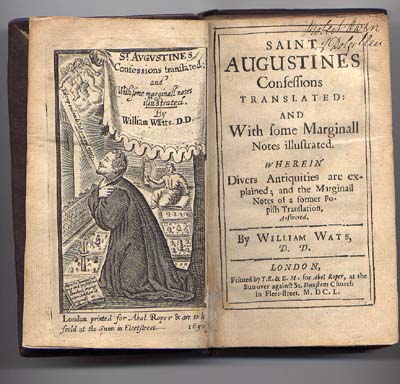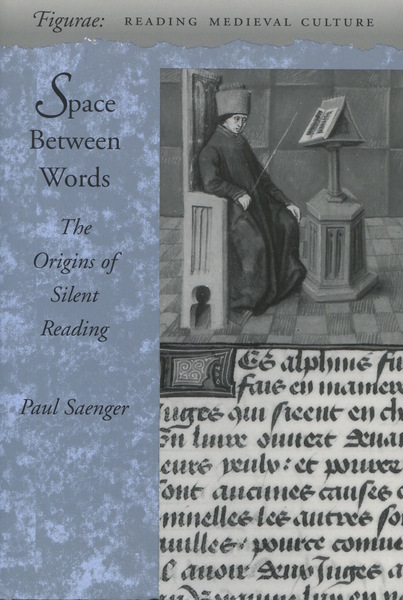Having studied the reading activities of Benedictine monks, Dr Richard Irvine proposes that reading doesn’t have to be a lonely act. Hearing a text or reading it to someone can turn it into an opportunity for dialogue.
Could you tell our readers a bit about yourself.
I’m an anthropologist, so I’m interested in how and why people live they ways they do. I have a whole range of research interests, but the topic I cut my teeth on was religious life. I carry out research in the UK and in Mongolia. I used to teach at the University of Cambridge, but now I’m a researcher at The Open University and live on the island of Rousay in Orkney.
What inspired you to look at how Benedictine monks read the Bible? Your paper, How to read: Lectio divina in an English Benedictine monastery, blew us away.
So for my PhD I lived a year in a Catholic English Benedictine monastery. I was trying to trace all the different aspects of life – working, eating, praying, etc. – and how they all fit together. One of the things that really interested me was the way in which the monks attempted to infuse even the most taken for granted activities with significance. So I would work in the carpentry workshop, and there was a strong theology of the significance of work, of even my rather clumsy work, as an offering to God and a participation in God’s creativity. And to take another example, eating was in essence an extension of the timetable of prayer. We would sit in silence as we ate, joined together as a community, listening to one of the monks read.
Reading was a really striking instance of this idea: an activity that might be taken for granted, made deliberately meaningful. In lectio divina, you learn to listen to the text (usually the Bible) as though it was being read aloud for you, learning to read slowly – “slow, then slower, then slower” was the advice, and reflecting prayerfully as you read, like “chewing the cud” I was told. Of course, such an approach to reading captures the imagination because it conjures up this idealised contrast between the world rushing around, and the monastery as a still centre.

But the thing I found striking was just how hard learning to read in this way was. I was a product of the University system. I’d learned to read in a particular way, mining big quantities of information, skimming to get to the point. So when I was confronted with this slow, prayerful style of reading, my body resisted. My eyes were eager to jump around, my hands eager to turn the page. It was physiologically hard. And that resistance made me reflect on what the actual processes involved were: why it was so different to “hear” a text rather than simply looking at it, why slowness would transform the way you absorb a text. There’s a lot of resonance with the slow food movement here – becoming conscious of the act of consumption, the nature of the things being consumed, and our relationship with them. But of course this is an act of privilege – not everyone has the time or opportunity to go slow. We have to be conscious that slowness is a luxury.
“It’s fascinating that… St Augustine remarks on St Ambrose’s ability to read without moving his lips as an amazing novelty.”
You describe in detail how lectio divina – reading as an act of listening – is performed. You explain who recites the scripture, who listens to the recitation and what’s going on when this is happening. There is “stageability” in the way the scripture is written. How does the physical space come into this? Is it also important to have a dedicated premise in order to invoke this sense of occasion?
One of the things that’s quite striking about lectio divina is that it’s often associated with private space – in contrast, for example, to the public space of the church services. So there’s a kind of intimacy there, the space in which to take the time to listen to the text and find your own resonance with it. But in terms of making space, I think there’s a wider issue at stake here – for monks I think lectio divina is one of their key products for export precisely because it’s not site specific; you can do it anytime, anywhere. And given the focus on reading scripture you only need the one book so it’s not as though you need to surround yourself with a great library. Yet this comes out of a setting within the monastery where listening is so much part of the daily life – listening while you eat in silence, chanting and listening in turn in the services, and so on. That forms a very privileged context for learning to read as though the text was being read to you. What are the physical spaces that enable us to listen? In life beyond the cloister walls, there’s no immediate answer to that question.
“One might argue that something is lost as we lose a sense of reading as dialogue.”
The paper touches a bit on the history of the text. For example, in ancient Greece, the text had no punctuation marks – “one word ran into the next” – so the text had to be read out loud. But by the 14th Century, the text was written for a “presupposed reader who read only with his eyes”. Meaning that marks were introduced. At this point, writing “takes it own spatial logic”, a movement away from the sound of text. Why did reading become so silent? Or so isolating?
It’s fascinating that in St Augustine’s Confessions, written in the 4th century, he remarks on St Ambrose’s ability to read without moving his lips as an amazing novelty. One thing we might suggest is that there’s a clear link implied there between the written and the oral, and what’s interesting is how and why written culture diverges from oral culture – storytelling, rhetoric and so on. Walter Ong has written a great deal about that. But I think Paul Saenger’s history, Space Between Words: The Origins of Silent Reading, is very interesting because it talks about the kinds of complex engagement with scholastic texts in the later Middle Ages that simply wouldn’t be possible if reading was linked to speech and hearing – texts to be read discontinuously so you can mine them for information, the eyes jumping about trying to retrieve particular references. One might argue that something is lost as we lose a sense of reading as dialogue. But given that rapid individualised ways of reading are considered so essential now, the idea that the text might dictate the pace and the order to the reader seems like a loss of control – and indeed time – that we can ill afford.

You mention that “the practice of lectio is like receiving a gift… it provides a means by which to establish or maintain a relationship”. So, if wisdom is what is gifted by God to the reader, does that mean that the lectio – or the utterance – is the reader’s offering to God? I observe that in some belief systems, such as Buddhism, the act of singing, dancing or performing martial arts is not just art. Just like the fruits placed on the altar, this, too, is an offering to divinity. Is the premise similar?
One of the key anthropological ideas of the gift, and this harkens back to Marcel Mauss’ classic theories of the hau of the gift, is that it’s not so much the thing that’s given that matters, but the relationship made possible by the reciprocity of giving and receiving. As I mentioned earlier, I think one of the striking principles of monastic life is the idea of doing things consciously because in that way you adopt a stance that is open to the possibility of a relationship not only with God but also with others in the community (rather than the idea that you do the thing simply for yourself). I think that’s very similar to the idea of the deliberate offering of singing or movement.

The speech is not just for instructions. The speech is also a pleasure, according to linguists Wallis & Shepherd (1998). Can a monk derive pleasure from lectio divina?
It would be very easy to oppose the discipline of slow deliberate reading to fleeting pleasures. But because it’s a dialogue and open to the idea that reading is a relationship, lectio divina has been described by monks, such as the Trappist Basil Pennington, as “the way of friendship”. And if friendship isn’t a pleasure, what is?
“Reading slowly is an act of privilege – not everyone has the time or opportunity to go slow. Slowness is a luxury.”
New written formats lead to us being able to speed-read. The influx of data to be interpreted also force us into the habit of speed-reading. In social media, we don’t read at all. We just react. The medium is designed to elicit that type of knee-jerk response. Is it time we re-learn the art of reading slowly?
Lectio divina was one of the most valuable things I learned during my time in the monastery, and it’s undeniable that it breathes life into a text when reading is not just a lonely act but a process of listening and an opportunity for dialogue. But slowness is a luxury. It is not something that can be taken for granted – indeed, the non-productive use of time, as the sociologist Thorstein Veblen pointed out at the very end of the 19th century is often a status symbol, a form of conspicuous consumption not available to everyone.
So by all means find time to read slowly. But it’s probably also important to ask why the contemporary conditions of life make you feel like you’re denied that time.
How to read: Lectio divina in an English Benedictine monastery can be read on academia.edu and is also available via Taylor & Francis. Irvine’s latest book, In the Depths and the Shallows: An Anthropology of Deep Time will be released in the coming year.
Main artwork, Not playing at being a monk, is by Chris Fairless and was drawn to illustrate an article in the 2008 issue of the anthropology magazine Imponderabilia profiling the work of Richard Irvine and Jo Cook as anthropologists who had carried out fieldwork in monasteries.



0 comments on “Five Minutes With: Dr Richard Irvine, Author & Anthropologist”